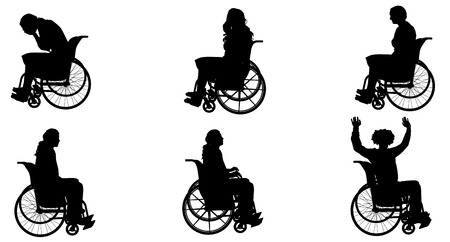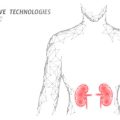Introduction to Gait Training for Amputees in the UK Context
Gait training is a cornerstone of rehabilitation for amputees, playing a pivotal role in restoring independence and enhancing quality of life. In the UK, this process is shaped by both clinical expertise and the unique structure of the National Health Service (NHS). For many individuals who have undergone limb loss, the journey towards regaining mobility is not just about physical movement—its about reclaiming daily life, navigating local environments, and adapting to community expectations. The significance of gait training extends beyond biomechanics; it encompasses psychological resilience, patient-centred care, and ongoing support tailored to each persons needs. Within the British healthcare landscape, there are distinctive pathways and multidisciplinary teams dedicated to supporting amputees through prosthetic provision and rehabilitation. Understanding these frameworks is crucial, as they directly impact access to resources, continuity of care, and long-term outcomes for patients across the UK.
2. Understanding NHS Pathways and Accessing Prosthetic Services
Navigating the NHS pathway for amputees seeking prosthetic and rehabilitation support can feel overwhelming, especially when you’re still adjusting to life after limb loss. The UK’s approach is rooted in universal healthcare, but there are regional differences in how services are delivered. Here’s a practical breakdown based on both experience and insight into the process.
Getting Started: Referrals and Initial Assessment
Most people enter the prosthetic pathway via a referral from their hospital consultant, GP, or sometimes a community physiotherapist. Once referred, you’ll typically be directed to your local Limb Centre – these are specialist units within the NHS that focus on prosthetic provision and rehabilitation. Waiting times can vary depending on where you live, but you should receive an initial assessment with a multidisciplinary team (MDT), including a prosthetist, physio, and occupational therapist.
Key Stages in the NHS Prosthetic Pathway
| Stage | What Happens | Who Is Involved | Regional Variations |
|---|---|---|---|
| Referral | GP/hospital refers you to Limb Centre | GP, Consultant | Some regions have direct referral; others require more steps |
| Assessment | Comprehensive evaluation of physical needs and goals | MDT: Prosthetist, Physio, OT, Nurse | Larger centres may offer quicker access to all specialists |
| Prosthetic Fitting | Casting and fitting of initial prosthesis | Prosthetist, Technician | Availability of advanced components varies by region/budget |
| Rehabilitation & Gait Training | Bespoke physio plan; ongoing adjustments to device & gait pattern | Physiotherapist, Prosthetist | Urban centres often have more resources for specialist gait training programmes |
| Follow-Up & Review | Regular reviews for progress and equipment upgrades/repairs | MDT + Support Staff | Review frequency may differ; some areas offer outreach clinics for rural patients |
Navigating Regional Differences in Service Delivery
The UK is divided into various NHS trusts and health boards, each with its own processes and resource allocation. For example, urban centres like London or Manchester tend to have larger Limb Centres with more advanced technology and greater staff capacity. In contrast, rural areas may rely on smaller satellite clinics or outreach visits from central teams. This can affect waiting times for appointments or access to newer types of prostheses.
Tips for Maximising Your Access:
- If you face delays, ask about being referred to another centre within your region (sometimes possible if capacity allows).
- Keep a record of your needs and concerns—being proactive during assessments helps ensure nothing gets missed.
- If youre unhappy with the service received, each NHS trust has a Patient Advice and Liaison Service (PALS) that can help resolve issues or clarify pathways.
The journey through the NHS prosthetic system isn’t always straightforward, but understanding the pathway—and being persistent—makes a real difference in getting the support you need.

3. Personalised Prosthetic Selection and Fitting
One of the defining features of amputee rehabilitation in the UK is the highly individualised approach to prosthetic selection and fitting. This process begins with a thorough assessment, typically led by multidisciplinary teams within NHS prosthetics centres. The initial evaluation is not only clinical but also holistic, considering both the physical and psychological needs of each patient. Factors such as the level of amputation, residual limb health, lifestyle aspirations, and even hobbies are taken into account.
Assessment Process: Beyond the Physical
The British system places significant emphasis on getting to know the person behind the patient record. During assessments, professionals will often discuss your daily routines, work commitments, family life, and long-term ambitions. This ensures that any prosthesis provided is not just functional, but genuinely enhances quality of life. Detailed measurements and digital scans may be employed to ensure a bespoke fit—no two sockets are ever quite the same.
Collaboration with NHS Prosthetists
Collaboration is at the heart of this process. NHS prosthetists work closely alongside physiotherapists, occupational therapists, and sometimes orthopaedic consultants to create a comprehensive care pathway. Regular case conferences are held where progress is reviewed and goals are refined. Patients are actively involved in these discussions; you’re encouraged to voice your preferences and concerns so that adjustments can be made before any final decisions.
Shaping Choices: British Standards and Patient Preferences
Prosthetic provision in the UK is guided by national standards set out by bodies such as the British Association of Prosthetists and Orthotists (BAPO) and NICE guidelines. These ensure a certain level of quality and safety across the board. Yet, there’s always room for individual choice—whether it’s opting for a more robust foot for country walks or a lightweight design better suited to city commutes. Crucially, patient preference carries real weight here; clinicians will often seek out feedback from previous users and incorporate lessons learned into future fittings.
Finding What Works for You
Ultimately, adapting gait training for amputees in Britain isn’t just about clinical best practice—it’s about finding what works for you personally. The combination of rigorous standards, expert guidance, and genuine collaboration ensures that every prosthetic journey is unique, practical, and empowering.
4. Tailoring Gait Training to British Lifestyles
When it comes to prosthetic rehabilitation in the UK, one size certainly does not fit all. The varied landscapes—from bustling city centres to remote countryside paths—and ever-changing weather demand a flexible, personalised approach to gait training for amputees. It’s essential that both clinicians and patients recognise the unique challenges posed by local environments and daily routines so that gait training is both practical and sustainable.
Adapting to Urban and Rural Environments
Whether someone lives in central London with its cobbled streets, crowded pavements, and frequent use of public transport, or in the rolling hills of Yorkshire with muddy footpaths and uneven terrain, their rehabilitation plan should reflect these realities. Urban settings often require mastering kerbs, escalators, busy crossings, and navigating through crowds—skills that may need specific drills during physiotherapy sessions. On the other hand, rural living might involve walking on grass, gravel tracks, or negotiating stiles and gates. Here’s a quick look at how gait training focus areas differ across these environments:
| Environment | Key Challenges | Gait Training Focus |
|---|---|---|
| Urban | Crowded spaces, stairs/escalators, public transport | Agility drills, balance exercises, step negotiation practice |
| Rural | Uneven surfaces, mud, long distances without rest spots | Proprioception training, endurance building, surface adaptation skills |
| Suburban | Pavements with occasional obstacles (bins, bikes), moderate traffic | Pavement navigation strategies, obstacle avoidance techniques |
Weather-Related Considerations: Rain, Ice & Beyond
The British weather is notorious for being unpredictable. Wet pavements, puddles, icy mornings in winter and windy afternoons all introduce new risks for prosthetic users. Incorporating practical coping strategies into gait training sessions is vital. For example:
- Rain: Practising on wet surfaces to develop confidence and appropriate foot placement.
- Ice/Frost: Teaching risk assessment for when it’s safer to avoid certain routes or use mobility aids.
- Wind: Developing core stability to manage balance when facing strong gusts.
The Importance of Real-Life Practice
No matter how well someone can walk in a controlled clinic environment, true progress happens when training extends into real-world scenarios. This might mean scheduled outings as part of therapy to local parks or high streets or even “homework” tasks like trying out different footwear or carrying shopping bags. Encouraging independence while recognising the limits imposed by local conditions fosters both confidence and resilience.
A Personal Perspective: What Works in Practice?
From my own experience working alongside amputees in various parts of the UK, what makes the biggest difference isn’t just technical skill—it’s the ability to problem-solve on the fly. Whether that’s learning how to handle unexpected steps at an old pub or managing fatigue on longer village walks, supporting individuals to adapt their gait naturally to their environment is key. Open communication between patients and their rehab team about daily life challenges ensures that gait training remains relevant and empowering.
5. Integrating Multidisciplinary Rehabilitation Teams
One of the defining features of amputee rehabilitation in the UK is the seamless integration of multidisciplinary teams within the NHS. The journey towards regaining a functional gait does not rest on the shoulders of a single professional; instead, it’s a collaborative effort that weaves together the expertise of physiotherapists, occupational therapists, prosthetists, and support workers. This approach ensures that every aspect of an amputee’s recovery—physical, psychological, and social—is addressed holistically.
The Central Role of Physiotherapists
Physiotherapists are often at the heart of gait training programmes for amputees. Their hands-on experience is crucial in helping patients adapt to new prosthetics, re-learn balance, and build strength. Beyond technical exercises, UK-based physios are known for their patient-centred approach, taking into account each individual’s lifestyle and goals. They tailor sessions to include real-world scenarios: navigating kerbs, public transport, or uneven pavements—challenges particularly relevant across British towns and cities.
Occupational Therapists: Bridging Clinic and Community
Occupational therapists (OTs) bring a practical lens to rehabilitation by focusing on daily living skills. In the UK context, OTs work closely with amputees to ensure homes are adapted for safety—fitting grab rails or advising on accessible layouts. They also provide invaluable advice for returning to work or leisure activities. By collaborating with local councils and charities, OTs help bridge the gap between hospital discharge and reintegration into community life.
NHS Support Services: A Safety Net
The NHS provides a comprehensive network of support services for amputees—from prosthetic clinics in regional centres to home visits from community nurses. These services are often coordinated through local Limb Fitting Centres, where multidisciplinary meetings ensure that care plans are reviewed regularly and adjusted as needed. This joined-up approach is a hallmark of British healthcare, ensuring no one falls through the cracks.
The Power of Peer Support Groups
Community-based and peer support groups have become an integral part of the rehabilitation pathway in the UK. Many NHS trusts actively encourage participation in local amputee clubs or online forums run by organisations like LimbPower or Blesma. Here, individuals can share experiences, discuss challenges unique to British society (like handling prosthetics in unpredictable weather), and offer encouragement rooted in lived experience. For many, these groups provide not just practical advice but also emotional resilience—a reminder that they’re not alone on this journey.
A Collective Effort
In summary, adapting gait training for amputees in the UK is truly a team effort—one that extends beyond clinical settings into everyday life. By leveraging the strengths of physiotherapists, occupational therapists, NHS support services, and community networks, individuals receive both expert guidance and heartfelt solidarity as they navigate their new normal.
6. Overcoming Common Barriers and Fostering Independence
Adapting to life after limb loss in the UK comes with a unique set of psychological, physical, and social challenges. For many amputees, the journey is as much about rebuilding confidence and self-identity as it is about regaining mobility. With first-hand experience in this field, I can say that tackling these barriers requires a combination of personal determination and robust support systems—many of which are readily available throughout the UK.
Psychological Challenges: Finding Your New Normal
The emotional impact of amputation cannot be underestimated. Feelings of grief, anxiety, or even frustration are common during rehabilitation. In the UK, access to mental health services through the NHS—including counselling and peer support groups—can make a tremendous difference. Charities like LimbPower and Amputee Support in the UK offer invaluable platforms for sharing experiences and learning practical coping strategies from those who’ve walked a similar path.
Physical Barriers: Personalised Solutions
No two amputees are the same, which is why British prosthetic and physiotherapy teams place strong emphasis on tailoring gait training to individual needs. NHS Limb Centres across the country provide multidisciplinary care, ensuring that each patient receives not just a prosthesis, but also ongoing adjustments and therapy. This holistic approach means setbacks—like socket discomfort or skin issues—are addressed swiftly, helping users stay motivated and mobile.
Navigating Social Hurdles
Social reintegration can be daunting. Many amputees worry about public perceptions or accessibility issues in their local area. Fortunately, the UK has a growing network of advocacy organisations such as The Limbless Association, which campaigns for inclusivity and offers practical advice on everything from accessible transport to returning to work. Community sports programmes—often supported by Sport England—also encourage participation regardless of ability level, fostering both fitness and camaraderie.
Accessing Support & Funding
Financial concerns can be significant, especially when it comes to obtaining advanced prosthetic technology or adapting your home environment. The UK government provides financial assistance through schemes like Personal Independence Payment (PIP) and grants via charities such as Blesma for veterans. Rehabilitation teams routinely help patients navigate these options so that funding does not become a barrier to progress.
A Culture of Empowerment
The British approach to rehabilitation is rooted in empowerment—helping individuals set realistic goals and celebrating milestones along the way. Peer mentors, online forums, and local support groups all play a role in nurturing independence. From my experience, embracing these resources not only accelerates recovery but also restores a sense of agency after amputation.
Together, these UK-specific pathways ensure that amputees are never alone on their journey towards independent living. By acknowledging challenges openly and making full use of available support systems, individuals can reclaim confidence and stride forward with purpose.
7. Reflecting on Progress: Measuring Outcomes and Setting Goals
One of the most important aspects of gait training for amputees in the UK is regularly reflecting on progress, both from a clinical and a personal perspective. Tracking mobility improvements isn’t just about ticking boxes for distance or speed—it’s about understanding how far you’ve come, what challenges remain, and where you want to go next. In British rehabilitation settings, the NHS employs a range of outcome measures such as the Timed Up and Go (TUG) test, 6-Minute Walk Test, and patient-reported outcome measures (PROMs). These tools help physiotherapists and prosthetists objectively chart improvements in walking ability, balance, confidence, and overall quality of life.
NHS Follow-Up Care: Consistency and Community Support
The NHS places a strong emphasis on consistent follow-up care. Regular appointments with your multidisciplinary team—physiotherapist, prosthetist, occupational therapist—are designed to catch any issues early, whether it’s socket discomfort, skin breakdown, or changes in mobility needs. Many local clinics offer group sessions or peer support opportunities, which can be incredibly motivating. There’s a real sense of community within British rehab settings; sharing stories and small victories with others who “get it” can be just as valuable as formal assessments.
Setting Realistic and Meaningful Goals
In my own experience working alongside amputees on their gait training journeys, one lesson stands out: goals need to be realistic, personal, and meaningful. In the UK context, this often means breaking down big aspirations—like returning to work or participating in Parkrun—into smaller milestones. Perhaps it’s mastering kerbs on the high street without hesitation, or being able to walk to the local shop independently. Your rehab team will work with you to set SMART goals (Specific, Measurable, Achievable, Relevant, Time-bound), ensuring progress feels tangible rather than overwhelming.
The Power of Honest Reflection
Progress isn’t always linear. Some days feel like setbacks. But taking time to reflect—perhaps through a rehab diary or during your NHS reviews—can reveal just how much ground you’ve covered since day one. Celebrate those wins! And remember: effective gait training is about more than physical steps; it’s about reclaiming confidence and independence within your British community.

